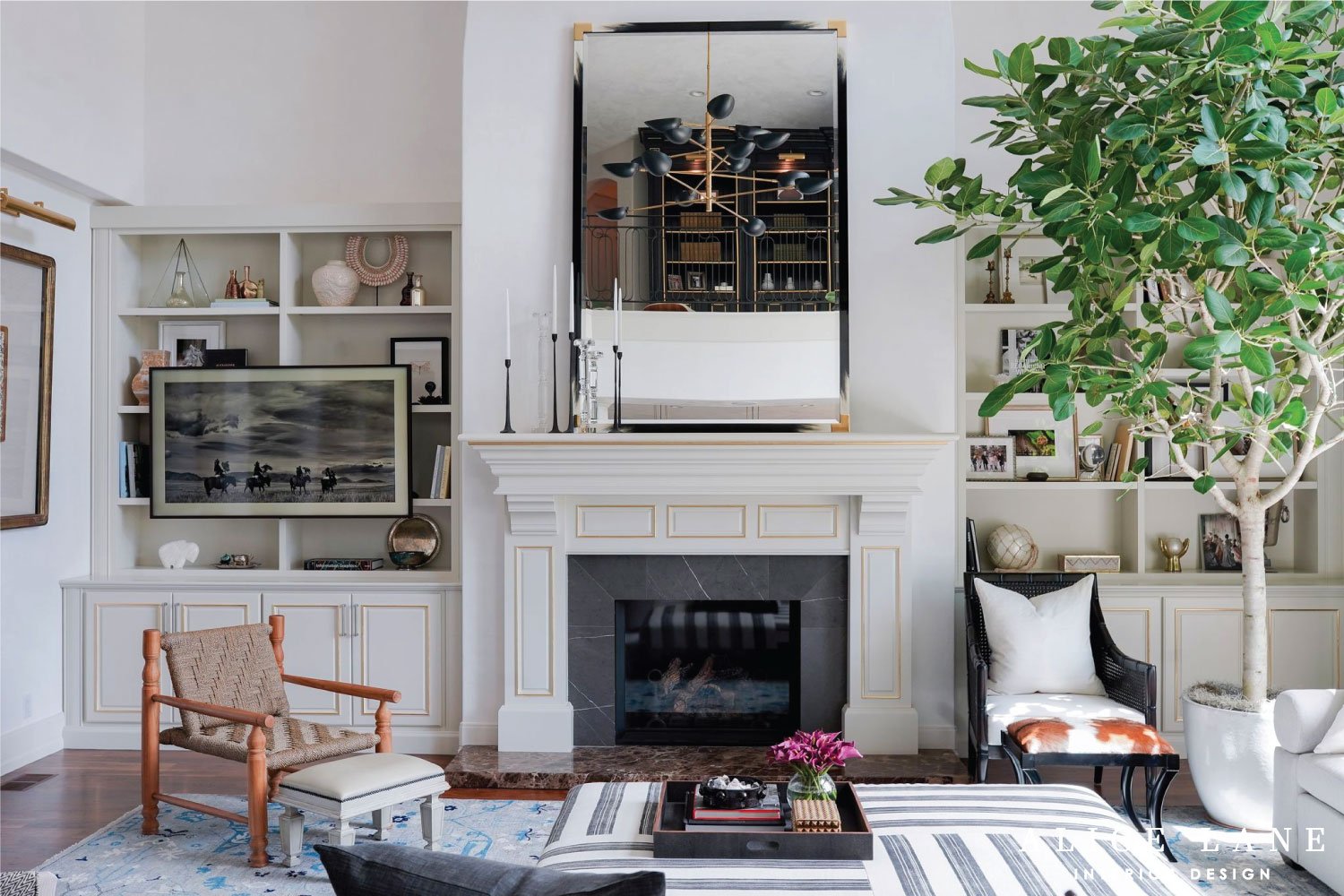Rugs 101
Rugs, rugs, rugs. They’re a must-have in the home, even though you don’t need one in every space. They’re essential for creating a feeling of warmth, and bringing in necessary color, pattern, and personality. A good rug selection has the power to bring the whole room together. But how do you pick the right rug? Today we are sharing our tips and tricks to this commonly done wrong item!

BIGGER IS ALWAYS BETTER
Our first tip is the most important one.. Go bigger before you go smaller! We frequently see people buy rugs that are too small for their rooms (possibly because smaller rugs are less expensive), but they don’t realize the disservice they are doing by skimping on the rug. Rugs always feel larger in stores than they do in our homes, and yet, a larger rug is the mark between a luxurious and comfortable feeling room, in contrast to a room that feels cheep and ill-fitting. The rule of thumb is to buy the biggest rug you can get away with for your space, without the rug running into walls.
LIVING ROOMS: Generally, a living room will need an 8’x10′, 9’×12′, or 11’x14′. It’s rare a room would need a 5’x8′ or 6’×9′.

BEDROOMS: In the bedroom, rugs should lay under the majority of the bed, while not sitting underneath the nightstands. You want it to stick out beyond the foot of the bed as much as possible, while still sitting and feeling relatively central in the room.

DINING ROOMS: The jury is still out on rugs in the dining room. They have the potential to get worn down quickly with the constant chair movement, but they also soften an otherwise potentially sterile room. Every home’s dining room is different, but we typically recommend using large art pieces or wall treatments over rugs in order to utilize the same visual appeal, without the inevitable future rug damage. That said, if a rug is going to be used, the rug should be large enough to extend a couple of feet from the back of the dining chairs.

ADD THE RUNNER
For long stretches of space in homes, we always love adding a beautiful runner! Long hallways, kitchen areas between the perimeter cabinetry and the island, linear bathrooms, etc. These spaces often don’t have place for any upholstered furniture or even artwork, so adding a runner will bring in the visual softness that the space craves. Remember that the rug should feel central to the space, so when figuring out it’s length, you’ll generally want to pull it in approximately 2′-3′ from each end.


LOOP OVER CUT
We will typically always recommend a rug that has a loop ply over a cut ply for countless reasons. Not only will they show a cleaner and more beautiful pattern, but they’ll also wear, sit, and last better. Cut ply’s are hard to maintain and can be near impossible to clean since the vacuum can’t get to the dirt and grime that rests at the bottom of the rug. Furniture will also sit much cleaner on a loop ply rug than it will a cut ply, helping the furniture to wear better down the road.
UTILIZE THE RUG PAD
It’s common for people outside of the interior design industry to overlook the need of a rug pad, but we’re here to tell you not to underestimate them! Like flossing our teeth, it may seen mundane and unnecessary in our day to day lives. Over time though, you’ll notice a big difference! Rug pads not only add comfort and cushioning to the rug area, but they also help the rug to last longer. It takes the brunt of the wear off the shoulders of the rug and onto itself, so rather than buying a new thousand dollar rug in a few years, you’re buying a new hundred dollar rug pad. That said, we highly recommend using a felt rug pad over a PVC one for true longevity sake.
TRUST THE PATTERN
Remember that rugs are used to add visual softness and comfort, so using a solid color may not be the best choice. Most of the time the goal of the rug is best served with a patterned rug, however big or small the pattern may be. That being said, there are always exceptions to the rule, and if your space already has a lot of pattern and personality then a solid may be the right choice for you.




